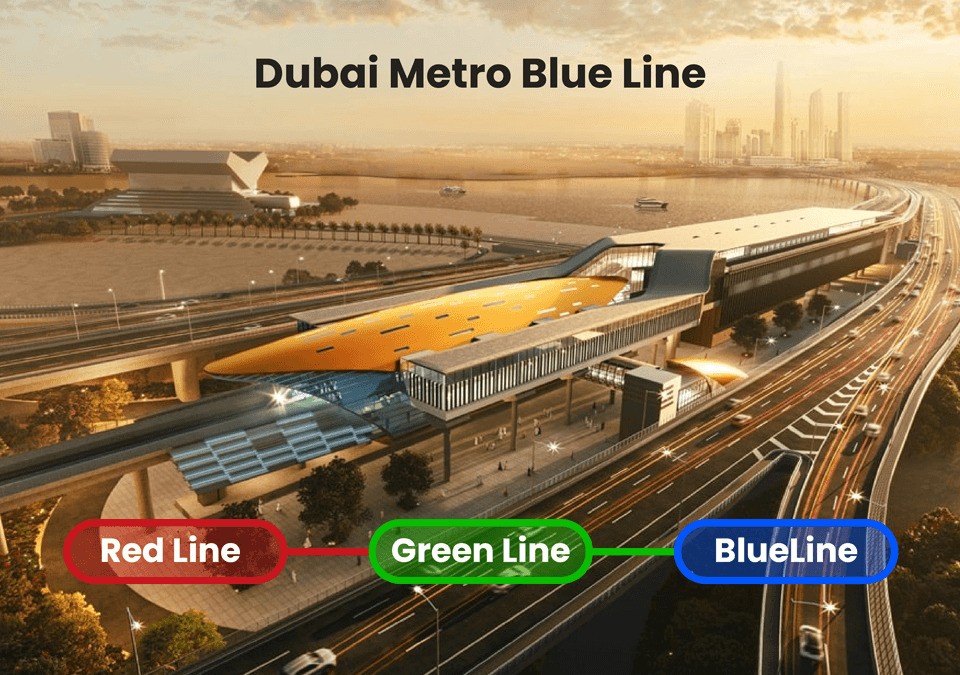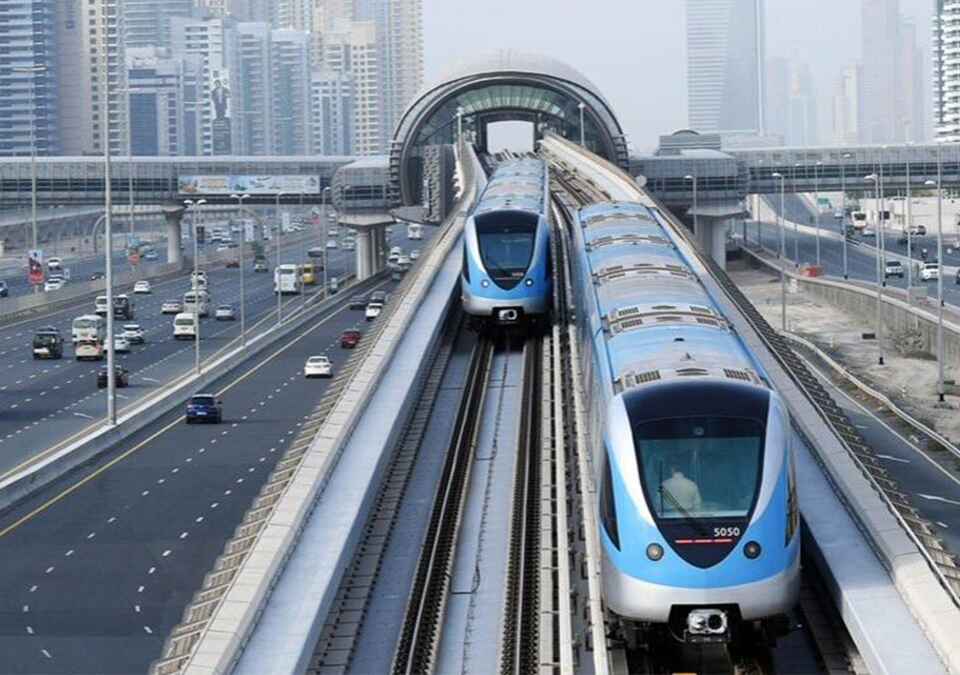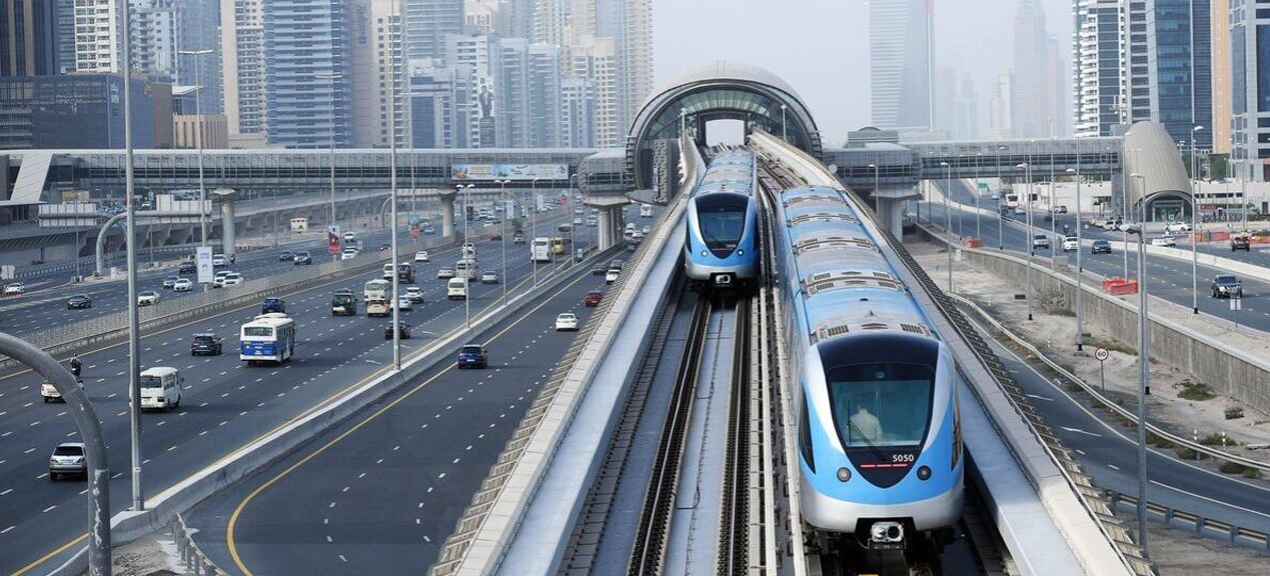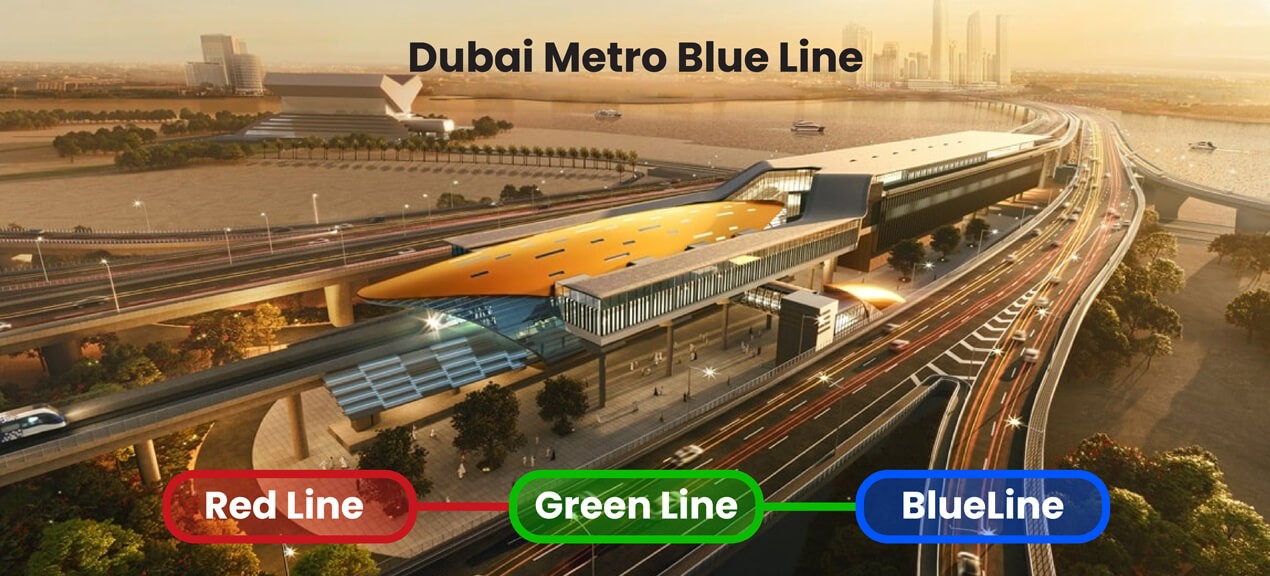
Dubai is a city that never ceases to amaze. From towering skyscrapers to record-breaking events, it’s no surprise that the Dubai Metro Blue Line is the next big thing making headlines. Announced by the RTA earlier this year, this latest metro addition promises to revolutionize how residents and visitors move around the city. But there’s more! The official launch date has been announced and is about as iconic as it gets.
Dubai Metro Blue Line: Launch Date Announced
Mark your calendars! On Sunday, September 9, 2029, the Dubai Metro Blue Line will officially open its sleek, futuristic doors to the public. What’s so special about this date? Just the fact that it aligns with the 20th anniversary of the Dubai Metro, which first began operations on 9-9-2009 at exactly 9:09:09 PM.
This isn’t just a metro launch. It’s a celebration of two decades of Dubai’s journey toward becoming one of the most connected cities in the world. So, don’t be surprised if the grand opening feels more like a festival than a ribbon-cutting ceremony.
Blueprint of the Blue Line: Connecting Dubai Like Never Before
With 30 kilometers of track and 14 modern stations, the Blue Line isn’t just a metro route. It’s an infrastructure sensation. Designed to handle 200,000 daily riders by 2030, it’s expected to grow even further. By 2040, it will accommodate 320,000 passengers daily.
The numbers are impressive, but let’s talk about the experience:
- Faster Travel: Commutes will range between 10 to 25 minutes, making the Blue Line the ideal solution for anyone tired of sitting in traffic.
- Strategic Stops: Covering key areas like Mirdif, Al Warqa, Dubai Silicon Oasis, and Dubai Creek Harbour, it ensures seamless connectivity for both daily commuters and tourists.
- Eco-Friendly Impact: By reducing congestion by 20%, the blue line will also play a vital role in reducing emissions, which will be a win for both residents and Mother Earth.
Two Routes of Dubai Metro Blue Line for Enhanced Flexibility
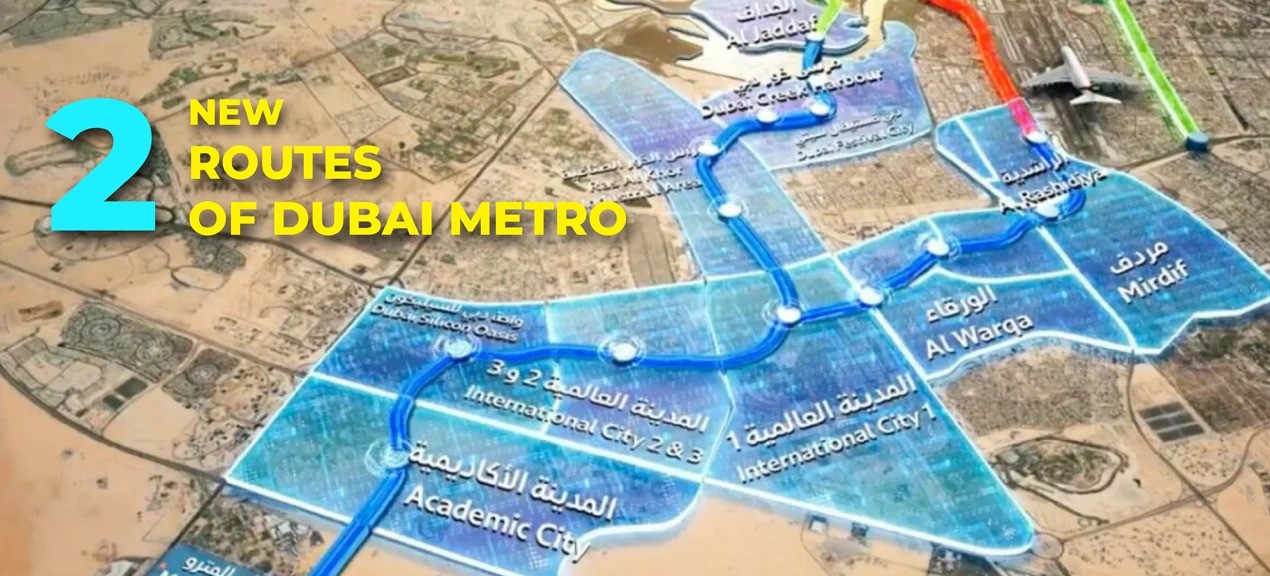
The Dubai Metro Blue Line is designed with versatility in mind, offering two distinct routes to meet varying travel needs:
Route One
- Length: 21 kilometers
- Stations: 10 (a mix of elevated and underground)
- Route Highlights: Starts at Al Khor Interchange (Green Line), stretches through Dubai Festival City, Dubai Silicon Oasis, and ends at Dubai Academic City.
Route Two
- Length: 9 kilometers
- Stations: 4
- Route Highlights: Connects Centrepoint Interchange (Red Line) in Al Rashidiya to Mirdif, Al Warqaa, and International City One.
This dual-route approach ensures a better reach across different parts of the city while maintaining smooth integration with the existing Red and Green Lines.
Innovative Station Design of the Dubai Metro Blue Line
Now, let’s talk aesthetics. The Blue Line stations are gearing up to dazzle commuters with their futuristic design. Unlike the enclosed stations of the Red and Green Lines, the Blue Line will feature sleek, curved structures.
Imagine walking into an oval-shaped platform that feels more like stepping into a sci-fi movie than catching a train. The open yet modern vibe of the stations reflects Dubai’s ethos of blending innovation with elegance.
A Step Toward the 20-Minute City Vision
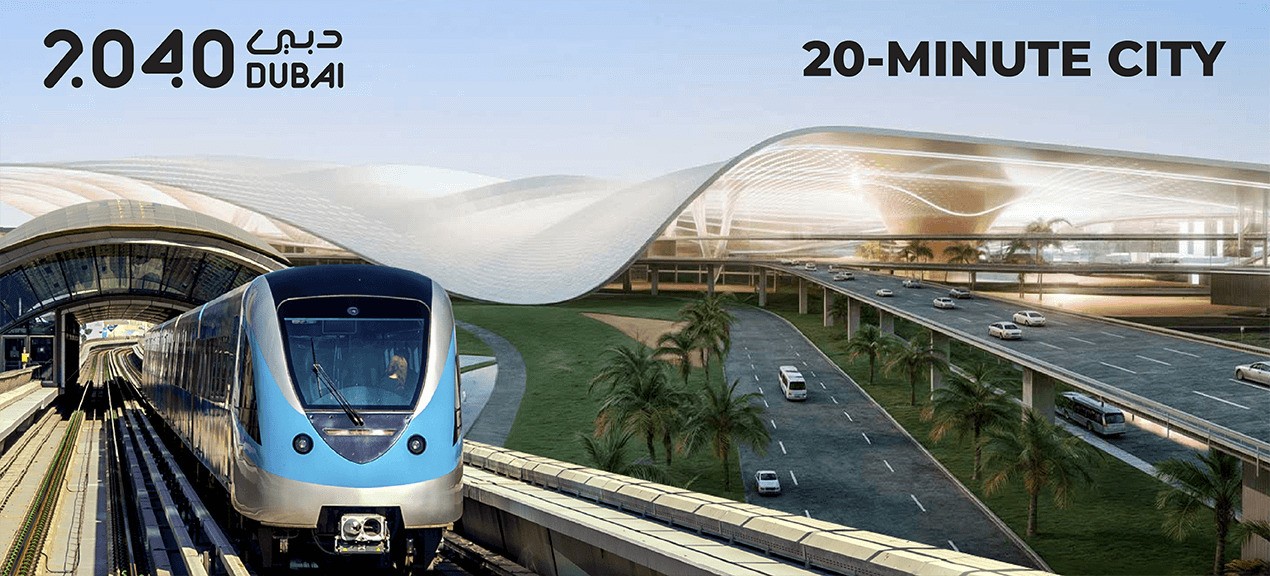
The Blue Line isn’t just a metro line; it’s a cornerstone of Dubai’s ambitious 2040 Urban Master Plan. If you’ve heard of the “20-minute city” concept, you know it’s all about convenience. The idea is simple: residents should be able to access 80% of their essential services within a 20-minute commute.
Here’s how the Blue Line is making that vision a reality:
- Direct Airport Link: Travelers can now quickly get from Dubai International Airport to key city hubs without the headache of traffic.
- Affordable Alternative: The metro will be a cost-effective choice for daily commuters, reducing the dependency on private vehicles.
- Sustainability Goals: By promoting public transport, the Blue Line helps Dubai stay on track to becoming a greener, more sustainable city.
What’s Next? The Countdown Begins
Construction is set to start in April 2025, and if Dubai’s track record with ambitious projects is anything to go by, we can expect nothing short of excellence. As the launch date draws closer, plenty of updates will keep us on our toes.
Final Thoughts: The Future of Dubai, On Track
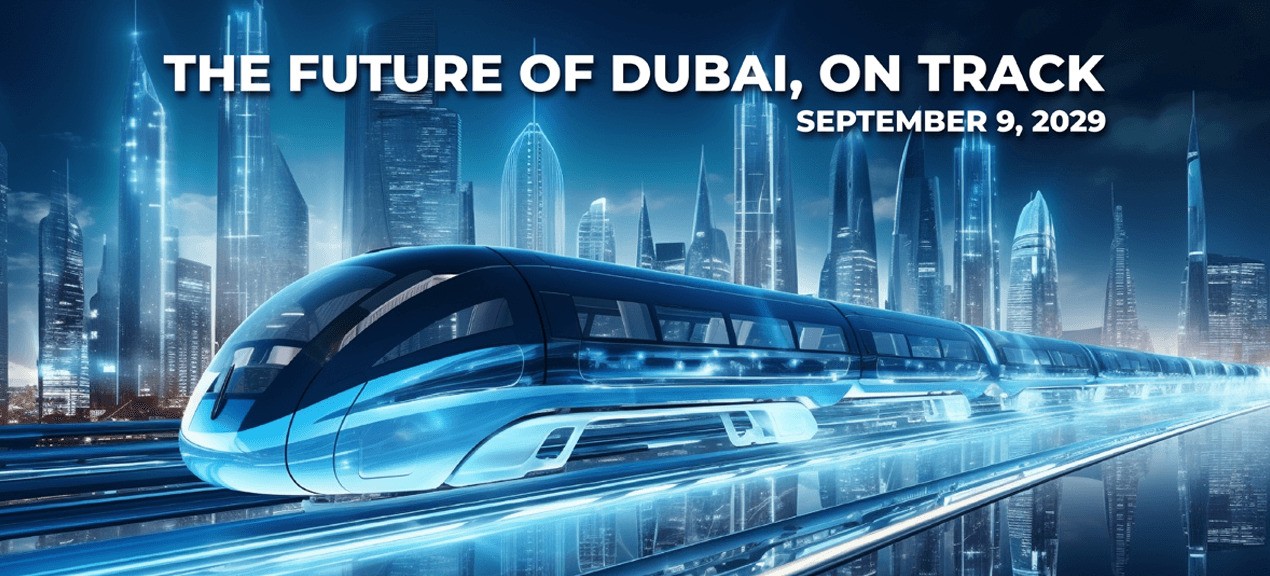
The Dubai Metro Blue Line isn’t just a new route; it’s a promise of a more connected, accessible, and sustainable city. From its ambitious capacity to its visionary design, every aspect of the Blue Line reflects Dubai’s commitment to being a global leader in urban development.
So, whether you’re a daily commuter, a tourist, or just someone who loves seeing Dubai break boundaries, the Blue Line launch is something to look forward to. Mark your calendar, set a reminder, and prepare to be part of history. Stay updated on Dubai’s news and latest developments. Follow LuxLiving to stay informed about the Dubai Metro Blue Line and other exciting projects shaping the city’s future.
And let’s meet on September 9, 2029, to ride into the future – together.

